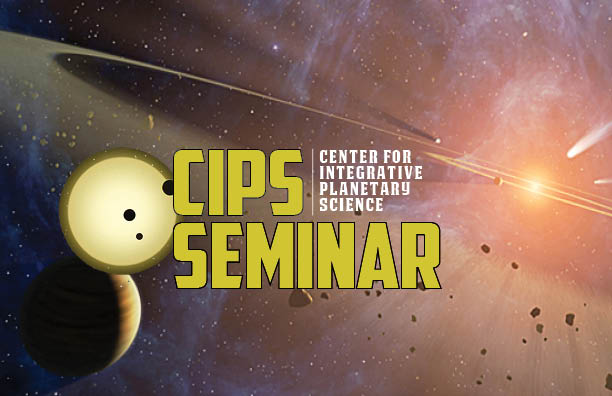CIPS Seminar: Enceladus Series 3-2
Wed, March 02, 2016

Miki Nakajima (Caltech) – Controlled boiling on Enceladus: Model of the vapor-driven jets
Plumes of water vapor and ice particles have been observed from the so-called tiger stripes at the south polar terrain (SPT) of Saturn's satellite, Enceladus. The observed high salinity (~0.5 – 2%) of the ice particles in the plumes may indicate that the plumes originate from a subsurface liquid ocean. Additionally, SPT is the source of strong infrared radiation (~4.2 GW), which is especially intense near (within tens of meters) the tiger stripes. This could indicate that the radiation is associated with the plume activities, but the connection remains unclear. Here, we investigate whether plumes originating from a subsurface liquid ocean can explain the observed mass flow rate, heat flow, and the ice to vapor ratio of the plumes. We solve the fluid dynamics of the flow in the crack and the interaction between the flow and ice walls assuming that the flows of water vapor and ice particles originate from a few kilometers deep liquid ocean. We find that our model could explain the observed mass flow rate of the plumes when the crack is straight and its width is 0.05-0.075 m. A wider crack is not favorable because it would produce a higher mass flow rate than the observed value, but it may be allowed if there are some flows that do not reach the ice surface due to condensation onto the ice walls or if the crack is tortuous. A tapering crack can also explain the observed mass flow rate and heat flow. This is a more ideal solution to avoid freezing the liquid subsurface ocean. The observed heat flow can be explained if the total crack length is approximately 1.7×500 km. The observed intense heat flow along the tiger stripes can be explained by the latent heat release due to vapor condensation onto the ice walls near the surface. We also find that the ice to vapor ratio of the plumes is sensitive to the ice mass fraction at the bottom of the flow (liquid-vapor interface). We find that the total mass flow rate of the plumes becomes larger when the crack width is larger, which is consistent with the observation that the flow rate increases near the apocenter, where the crack is expected to be widest
Michael Manga (Berkeley) – Why do volcanologists care particle size distribution and what do the particle sizes erupted on Enceladus mean for eruption processes?
Analogous to volcanic deposits on Earth, we can infer eruption characteristics on Enceladus from the relationship between particle size and distance from the vent. We develop a model in which ice particles feeding plumes are accelerated by the gas. We consider two cases: drag limited and collision‐ limited acceleration, which link particle size to exit velocity. After being ejected at the vent, particles follow ballistic trajectories. We fit the model to observations of particle size on the surface inferred from modeled VIMS data collected by the Cassini spacecraft. We obtain a relationship between gas temperature and characteristic acceleration length, whereby lower gas temperatures require longer acceleration lengths. The model shows that the large size of particles on the surface is consistent with the size of particles observed with the CDA and VIMS instruments at heights of Cassini flybys, and the size of particles that reach escape velocity and are found in Saturn’ s E‐ ring.
